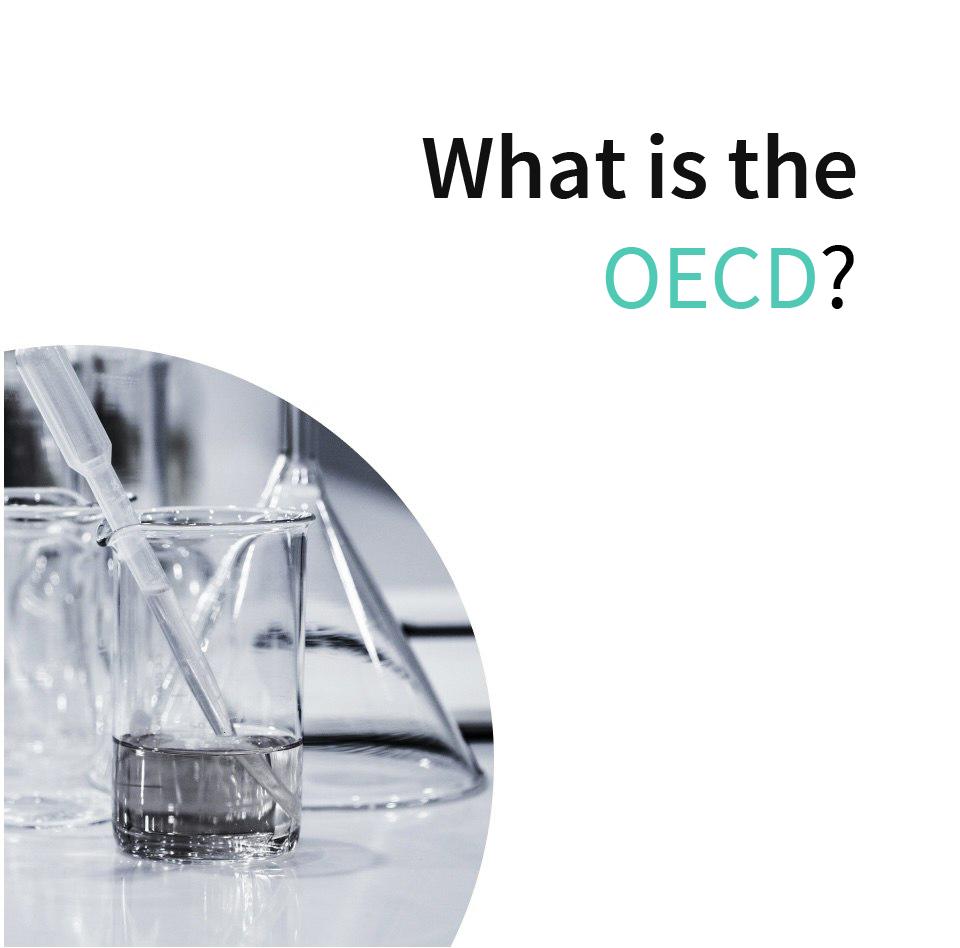
The Organization for Economic Co-operation and Development (OECD) and the International Council for Harmonization of Technical Requirements for Pharmaceuticals for Human Use (ICH) both play crucial roles in harmonizing global regulations on chemicals and drugs to ensure their safe use in humans and the environment. These organizations share a commitment to promoting the safety of the various compounds humans encounter daily.
What is the OECD?
The OECD works to shape global policies that foster prosperity, equality, opportunity, and overall well-being through economic development and international trade. One of its key roles is improving global human health by ensuring compliance with international standards. By setting policies, the OECD influences living standards and promotes better quality of life worldwide.
Key Areas of Focus:
-
Development
-
Economy
-
Environment
-
Health and Safety
-
Education
-
Science and Technology
The OECD has established guidelines for chemical testing and other critical areas like climate change, agriculture, and due diligence. These guidelines, government-approved and aimed at enterprises of all sizes, help ensure balanced living standards worldwide.
In the field of Health and Safety, the OECD focuses on the safe use of chemicals and biological testing to protect both people and the environment. Chemicals are omnipresent in daily life, from cleaning products to pesticides and medicines. The OECD’s role is to support global testing and policy development for chemical safety. With 38 member countries, the OECD facilitates the sharing of data and information to help establish international standards for the safe use of chemicals.
What is the ICH?
The ICH focuses specifically on the pharmaceutical industry. It offers guidelines designed to standardize the development and regulatory requirements for drugs intended for human and animal use. The ICH promotes the registration of pharmaceutical products, the protection of public health, and the implementation of harmonized standards across the globe.
One of the ICH’s critical roles is overseeing the safety and efficacy of pharmaceutical testing, ensuring that duplicate testing is avoided. This system of shared data allows countries and organizations to access existing test results, saving time and money.
Developing a new drug can cost billions and take up to 10-15 years to reach the approval stage. Often, research into drugs for rare diseases is abandoned due to these high costs. By enabling access to previously generated data, the ICH helps drug developers reduce both time and expense during Drug Discovery and Drug Development process.
Similarities Between the OECD and ICH
Both the OECD and the ICH offer extensive resources for chemical testing and Drug Development. Their guidelines ensure that testing approaches are unified, economically viable, and aligned with the reduction of animal testing.
For instance, the "ICH S5 (R3) Guideline on Reproductive Toxicology" provides scientific protocols for testing the reproductive toxicity of chemicals and medicinal products. These guidelines help harmonize research practices across the industry. Biobide, for example, offers a high-content teratogenicity assay (Teratotox Assay) based on the zebrafish embryos in vivo New Alternative Model (NAM), which is gaining attention for being cost-effective and highly homologous to humans. This model is also aligned with the Three Rs (3Rs) principle in animal testing, which seeks to replace, reduce, and refine animal testing to minimize suffering and improve animal welfare. This assay has been validated and qualified by Biobide for the very first time employing the Zebrafish embryo (NAM). Opening the doors to a more robust and cost-effective alternative model that has less ethical implications.
OECD and ICH Efforts to Reduce Animal Testing
By promoting the sharing of data among their global partners, the OECD and ICH not only save time and money but also actively contribute to the reduction of animal testing. There is increasing pressure to reduce animal testing through enhanced resources, guidelines, and a stronger focus on the 3Rs principle.
One method for reducing animal use is sharing already existing data, which helps avoid redundant testing. Although alternative models cannot yet fully replace animal testing, advancements in technology and assay development are gradually making this transition possible.
A prime example of such an alternative model is the zebrafish. Considered an embryo until 5-6 days post-fertilization(dpf), before it begins feeding and swimming independently. The zebrafish is a cost-effective and scientifically valid alternative to traditional mammalian models like mice and rats. Its similarity to human organs makes it an ideal model for studying human biology. As a result, large pharmaceutical companies and research institutions are increasingly utilizing this alternative aquatic model. Companies like Biobide offer drug screening assays using zebrafish embryos, which help reduce animal use and make preclinical investments more efficient.
Conclusion
In summary, both the OECD and ICH are essential organizations working to strengthen international collaboration in economic development and safety. By establishing higher standards for Drug Discovery and Development and Chemical Safety, they also promote the reduction of animal testing worldwide, supporting value creation in Research and Development.
Sources
https://ijdra.com/index.php/journal/article/view/365
Validation of a zebrafish developmental defects assay as a qualified alternative test for its regulatory use following the ICH S5(R3) guideline. Weiner, A.M.J., Irijalba, I., Gallego, M.P., Ibarburu, I., Sainz, L., Goñi-de-Cerio, F., Quevedo, C., & Muriana, A. 2023.


